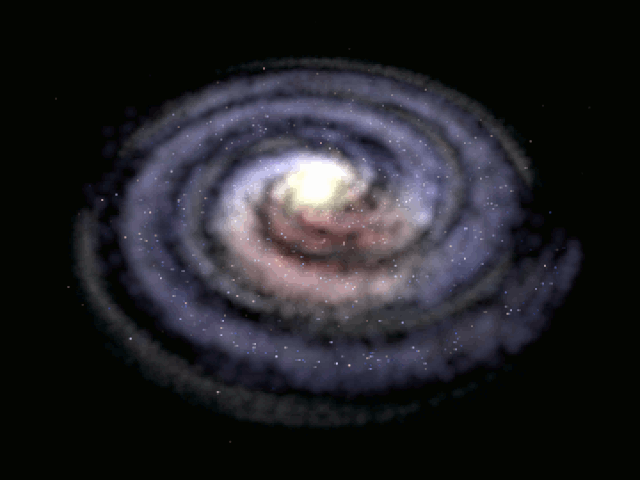This Ridiculously Speedy Star Might Be Running Away from a Rare, Unproven Type of Black Hole
I'd be running, too.

Astronomers have discovered a bright, young star that is running away from home. Why? What did the star's parents do to deserve this? According to a study published Aug. 6 in the journal Astronomy & Astrophysics, it's nobody's fault; it seems the young star simply fell in with the wrong crowd — namely, a very hungry black hole.
The star, which is named PG 1610+062, was first observed hurtling across the sky in a 1986 star survey, though little attention has been paid to the stellar renegade's story since then. In the present study, astronomers working at the W. M. Keck Observatory atop Hawaii's Mauna Kea volcano took the closest-ever look at the runaway. They confirmed it is one of the fastest stars ever seen shooting out of the Milky Way's galactic disk.
The team calculated the star's velocity to be about 1.2 million mph (2 million km/h), which isn't quite enough to escape the bonds of the galaxy's gravity, but fast enough for it to be able to leave the star's home solar system in the cosmic dust.
Related: 11 Fascinating Facts About Our Milky Way Galaxy
There are a few different processes that explain how a star can get booted out of its home system, and they usually involve binary partnerships — that is, two stars orbiting around a common center of mass. If one member of the pair were to theoretically disappear — say, by exploding in a supernova or getting swallowed up by a supermassive black hole —the remaining star might get such a sudden, energetic kick in the pants that it would slingshot straight out of its home system, or even out of its home galaxy entirely.
The case of PG 1610+062 may be a bit unusual though, the researchers wrote. Judging by the star's mass, velocity and likely origin (the team traced it to the Sagittarius spiral arm of the galaxy), it seems unlikely that the star ever came close enough to the supermassive black hole at the center of our galaxy to see its partner star gobbled up.
Rather, the star's fast-but-not-too-fast movement seems to suggest that it had a run-in with a mid-mass black hole — that is, a black hole with hundreds to hundreds of thousands of times the mass of the sun (as opposed to a stellar black hole, which can have up to about 20 suns' worth of mass, or a supermassive black hole, which can be millions or billions of times the sun's mass, according to NASA).
Get the Space.com Newsletter
Breaking space news, the latest updates on rocket launches, skywatching events and more!
Scientists have never found convincing evidence that mid-mass black holes exist in our galaxy. This stellar runaway still isn't hard proof of their existence, but it does strengthen the case that mid-mass black holes could be out there, the researchers wrote. Now, "the race is on to actually find them," lead study author Andreas Irrgang, an astronomer at the Friedrich-Alexander University of Erlangen-Nuremberg in Germany, said in a statement.
- The 12 Strangest Objects in the Universe
- 15 Unforgettable Images of Stars
- 9 Strange Excuses for Why We Haven't Met Aliens Yet
Originally published on Live Science.
Join our Space Forums to keep talking space on the latest missions, night sky and more! And if you have a news tip, correction or comment, let us know at: community@space.com.

Brandon has been a senior writer at Live Science since 2017, and was formerly a staff writer and editor at Reader's Digest magazine. His writing has appeared in The Washington Post, CBS.com, the Richard Dawkins Foundation website and other outlets. He holds a bachelor's degree in creative writing from the University of Arizona, with minors in journalism and media arts. He enjoys writing most about space, geoscience and the mysteries of the universe.

